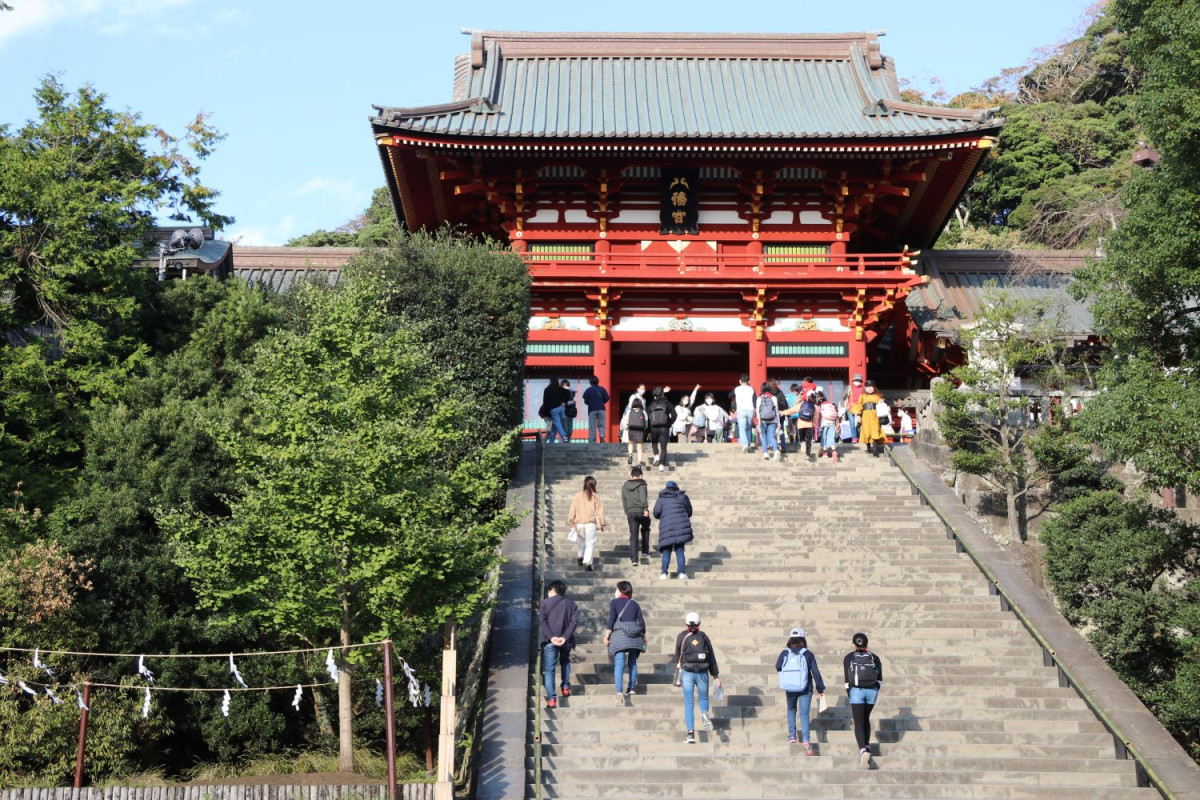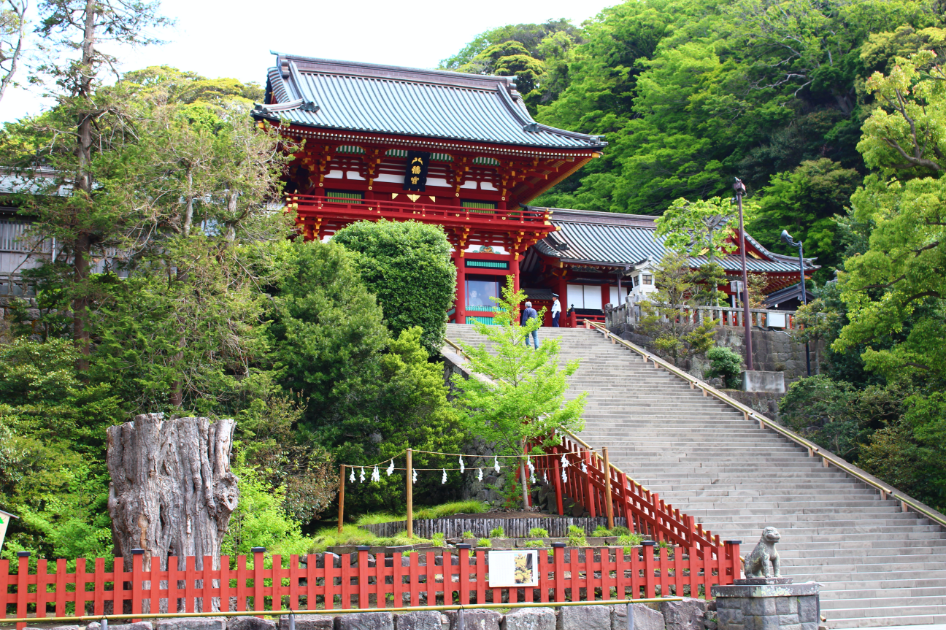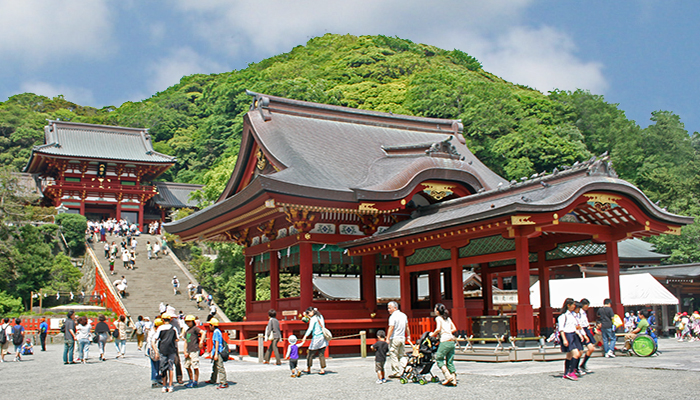


Tsurugaoka Hachimangu
The spiritual and historical heart of Kamakura, the ancient capital of the samurai.
The most important shrine in the historic city of Kamakura, Tsurugaoka Hachimangu is dedicated to Hachiman, the patron god of the samurai and the Minamoto clan.
History of the Shrine
The shrine's origins date back to 1063 when Minamoto no Yoriyoshi, the head of the powerful Minamoto samurai clan, established a branch of Kyoto's Iwashimizu Hachimangu in Kamakura to pray for victory in his campaigns in northern Japan. However, its grand scale and importance are thanks to his descendant, Minamoto no Yoritomo. In 1180, Yoritomo moved the shrine to its current location and made it the center of his new government, the Kamakura Shogunate, which would rule Japan for over a century.
Tsurugaoka Hachimangu thus became not just a religious center, but the political and cultural heart of the samurai capital. Every aspect of the shrine is steeped in the history of the Minamoto clan. The 'Danzura', a raised path leading to the shrine, was allegedly constructed by Yoritomo to pray for the safe childbirth of his wife. A tragic historical event occurred in 1219 when the third shogun, Minamoto no Sanetomo, was assassinated on the shrine's stone steps by his nephew, a dark event that ultimately led to the end of the Minamoto line's direct rule.
The Enshrined Kami
Hachiman is a very popular and powerful deity, the god of archery and war, later syncretized with the spirit of the 15th Emperor, Ojin, a semi-legendary figure. Originally a local agricultural deity, he was adopted by the Minamoto clan as their 'ujigami' or clan deity. As the Minamoto clan rose to power and established the first shogunate, Hachiman's status grew, and he became the tutelary god of the entire samurai class.
He is not merely a god of violence, but is revered as a divine protector of Japan, a symbol of leadership, and a bringer of peace through strength. He embodies the samurai ideal of 'bunbu-ryodo', the mastery of both the literary and martial arts. Worshippers pray to him for victory, guidance, and the protection of their family.
What to See
The shrine is approached via a long, wide path that leads from the Kamakura seafront, through the city center, and up to the main grounds. This path includes the 'Danzura' cherry tree-lined walkway. The main shrine building, the 'Hongu' or 'Jogu', sits atop a wide stone stairway, offering a commanding view of the city. Below the stairway is the 'Maiden', a stage for ritual dances and wedding ceremonies. This is where the assassin was said to have hidden before his fateful attack.
The grounds also contain two picturesque ponds, one with red lotus flowers representing the Minamoto clan and one with white lotuses for their rivals, the Taira clan. The shrine's treasure hall houses a collection of priceless artifacts, including swords, armor, and documents from the Kamakura period.
Major Festivals
The 'Reitaisai' (Annual Grand Festival) in September is the shrine's most famous event. Its highlight is the spectacular performance of 'Yabusame' (horseback archery). Master archers in full samurai attire gallop down a 250-meter track, firing arrows at three targets in quick succession. This dynamic and highly skilled ritual originated as a form of training and entertainment for the samurai, and is now performed as a sacred offering to please Hachiman, the god of archery and war. Other festivals celebrate the New Year, the founding of Kamakura, and the blooming of the lotus flowers.
Support Tsurugaoka Hachimangu
Your participation helps preserve this sacred site for future generations. Every digital offering contributes to real shrine preservation efforts across Japan.
By making an offering, you become part of a global community honoring Japanese spiritual traditions and supporting the cultural heritage that has been cherished for centuries.